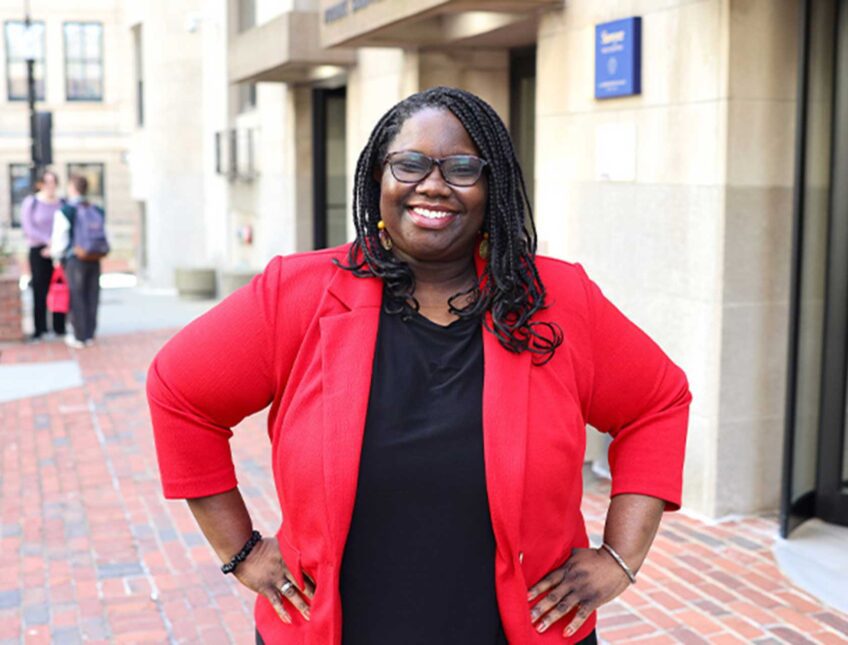BRA JP/Rox plan raises questions
Infrastructure seen lacking in planning area

On Saturday morning, March 5, the Boston Redevelopment Authority hosted the fifth community workshops for a yearlong effort examining potential development and rezoning for a swath of Jamaica Plain and Roxbury that includes Jackson Square, Egleston Square, Stony Brook, Green Street and Forest Hills.
“Plan JP/Rox” kicked off last summer and is expected to wrap up with recommendations in May and rezoning decisions over the summer. It is one of several new planning and potential rezoning efforts under Mayor Martin Walsh and BRA Director Brian Golden. A similar process is underway for South Boston’s Dorchester Avenue between the Broadway and Andrew MBTA stations. A Dudley Square visioning process is just beginning this spring, and a plan for the Glover’s Corner section of Dorchester will start soon.
The focus on these areas comes as the city seeks to add the 53,000 new housing units Boston is projected to need by 2030 to accommodate growth. The JP/Rox and South Boston plan areas have significant portions of land currently zoned for industrial uses that might be rezoned to permit higher density mixed-use or residential development.

Author: Sandra LarsonDanielle Sommer, shown with her 3-year-old son, attended a March 5 community workshop for the BRA’s JP/Rox planning process. She is concerned about rising housing prices pushing out longtime Jamaica Plain residents.
For years, as the JP area has emerged as a hot real estate market and the target of a surge of developer interest, local residents and elected officials have called for a comprehensive area plan. Without a plan that sets standards for such factors as allowed uses, affordability and building heights and setbacks, each developer may seek variances from zoning restrictions and then proceed through an individual community meeting and approval process that can feel to residents as if it’s starting from scratch each time.
The BRA process has involved an unprecedented degree of community participation and inter-agency cooperation, by many accounts, yet has left some JP/Rox community members, including those on the appointed advisory group for the plan, feeling nervous and not fully heard or empowered. Worries abound, from loss of JP’s neighborhood character, to lack of affordability and displacement of existing residents, to a feeling of the processed being rushed or not fully thought out.
Egleston Square resident Deborah Grace, 66, attending her first JP/Rox meeting, said she came in with a number of concerns, chief among them how to maintain the neighborhood’s ethnic mix and not displace people.
“I want it to look like it looks now,” she said, “in terms of bodegas and community relationships.”
Dan Thomas, an architect and advisory group member, echoing thoughts expressed by several others, said he is concerned about infrastructure to support added population in JP.
“What’s going to happen with mass transit, with traffic and utilities and parking?” he said. “It’s putting the cart before the horse. It’s my experience that developers are short sighted, and planners are supposed to take the longer view — and we’re not in that mode.”
Density
Thomas and other community group members have added up the numbers. With 2500-plus existing households in the plan area, plus a projected 3,100 to 3,700 new units, plus 800 to 1,000 units already in the development pipeline (but not noted in the BRA’s JP/Rox materials), they see a jump from 2,500 units to more than 7,000 — a 180 percent increase.
The BRA’s Mercurio said that it’s not likely that all developments in the scenarios will happen, and also indicated that city agencies taking into account infrastructure impacts. City Councilor Matt O’Malley, whose district includes the JP/Rox plan area, expressed cautious trust in this assertion.
“This [infrastructure] part is less noticeable and it’s very important,” O’Malley said. “I’m sure the BRA is taking it into account, but it’s worth repeating because it [involves] different entities that the BRA doesn’t control.”
Regarding concerns about time frame, BRA representative John Dalzell countered that if the comprehensive plan is finished sooner rather than later, the development that’s already starting to happen could be informed by the new plan.
Still, some worry.
“I personally believe that the process seems rushed,” said Alvin Shiggs, an Egleston Square resident who serves on the Plan JP/Rox advisory group. “With the large meetings, you have only two hours to try to tackle a fairly complicated process, and the next month you’re tackling other topics. There isn’t much chance for feedback once the meeting is over. They do put it on the web, but I don’t know if they get much response to that.”
The BRA’s presentation and slide show included a presentation by Devin Quirk of the city’s Department of Neighborhood Development. A proposed goal, he said, is that 30 percent of all newly created housing in the JP/Rox area will be deed-restricted affordable.
One strategy for achieving this goal is “density bonuses,” allowing developers to build taller or denser housing development in exchange for a higher set-aside of affordable units.
On the web
BRA planning initiative websites:
Plan: JP/Rox – http://bit.ly/1NkcGg6
JP/Rox development scenarios as of March 5 – http://bit.ly/1RhC9UL
Plan: South Boston Dorchester Ave – http://bit.ly/1T4VcGq
Plan: Dudley Square – http://bit.ly/24fbHnF
City of Boston 2014 housing report – http://bit.ly/1NONeNV
Hold that thought
The hour-long presentation was dense with facts and figures, and some attendees expected a general Q & A session, but comments and questions were taken instead in six breakout stations, where BRA staff members addressed small groups. Five breakout sessions focused on scenarios for particular areas — Jackson Square, Egleston Square, Stony Brook, Green Street and Forest Hills — and one focused on affordable housing goals for the plan as a whole.
In the Egleston Square session, questions and comments flew as people glimpsed the development scenarios posted on the wall. Some decried building numbers and heights, arguing that six stories is too tall for Egleston Square.
Tim Reardon, a Jamaica Plain resident and member of the Egleston Square Neighborhood Association’s housing committee, offered a counter to anti-height arguments.
“I think height proposed here is appropriate,” he interjected. “So many people want to move to JP. They won’t go away if we don’t build housing. They’ll drive up the rents in these triple-deckers already here. I think we need to build high, to accommodate the demand that’s coming whether we want it or not.”
Danielle Sommer, 33, listened closely to the discussion while keeping one eye on her children, 5-year-old Amora and 3-year-old Attis, as they played at an activity table nearby.
“Affordability is a joke,” Sommer said. “A one-bedroom for $1,400, that’s not affordable for real people in Egleston Square — which means you’re pushing out existing residents. I live there. I’m from there. I want to stay there. We keep building housing at luxury rates, as if people are making luxury money. You’re actively encouraging undermining a neighborhood.”
A BRA staffer wrote notes on flip chart paper, while Mercurio worked to address the barrage of comments, which also covered traffic issues and concerns about local hiring for construction jobs.
Pushed out
Stepping away from the crowd, Sommer told the Banner she currently rents in Egleston Square, having returned to her home neighborhood after college and started a family here. She said she feels pushed out by rising rents, despite the city’s seeming goal of encouraging young professionals like her to stay in Boston.
“I feel the city has a vision of what it wants,” she said, “but it doesn’t really match what our reality is.”
Shiggs told the Banner in a telephone interview that he felt the BRA’s outreach effort to “ordinary folk” has been weak.
“A few public notices here and there, but they weren’t consistently in English and Spanish and in the Spanish media outlets,” he said. “The public community meetings have been attended largely by professional folks, some planners, developers, real estate folks, activists — a lot of white, middle class folks. They’ve had very good input. [There’s been] a lot of talk of affordable housing, transportation, mixed-use, helping small businesses. However, those meetings have been devoid of ordinary low-income immigrant folks who live in the Egleston area.”
Mercurio said that her team has responded to requests for features to make meetings accessible to a wider range of people, including locating meetings in different parts of the plan area and at different time slots (for instance, Saturday morning instead of only evenings), offering a table for children’s activities and providing Spanish translation. At the March 5 workshop, a Spanish interpreter was there, but had no takers.
Shiggs admits to being cynical.
“It appears that this process is very friendly in favor of developers. What is the community benefit? The fact that they can make maximum money and move on, leaving our community in a different place … is unsettling.”
As for the oft-repeated assertion that increasing supply will combat rising prices, Shiggs had this to offer:
“They say you build more and the prices come down, eventually. But it’ll be a very different community when the prices come down.”

![Banner [Virtual] Art Gallery](https://baystatebanner.com/wp-content/uploads/2024/04/NJ-H_1-150x150.jpg)




